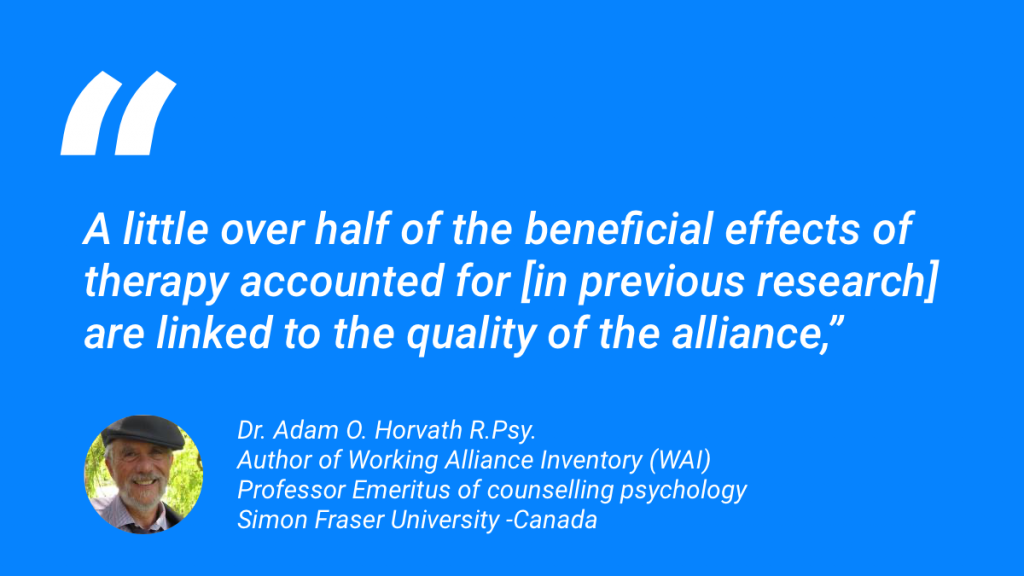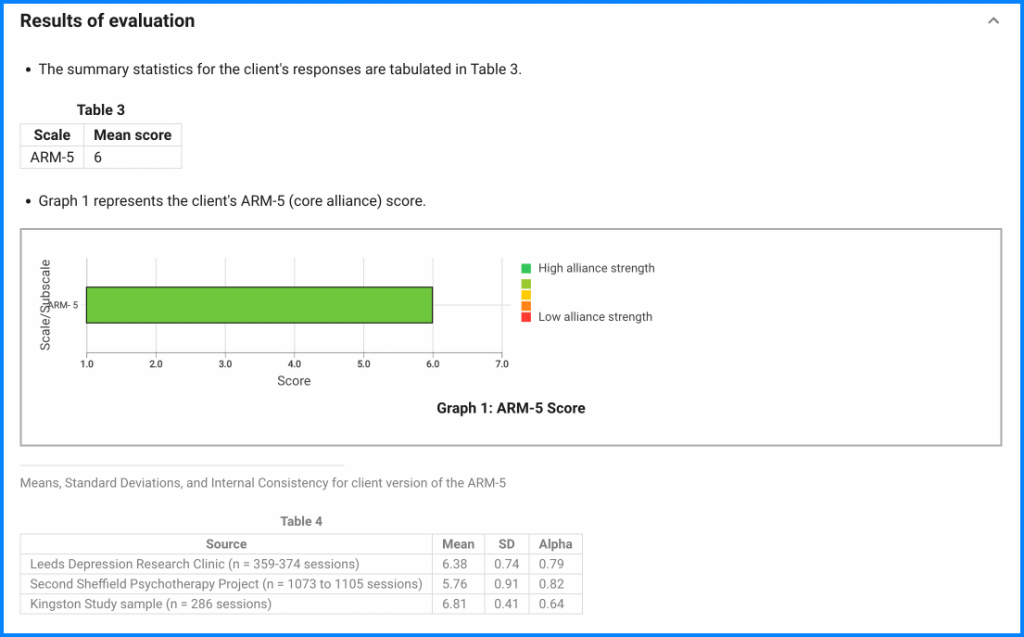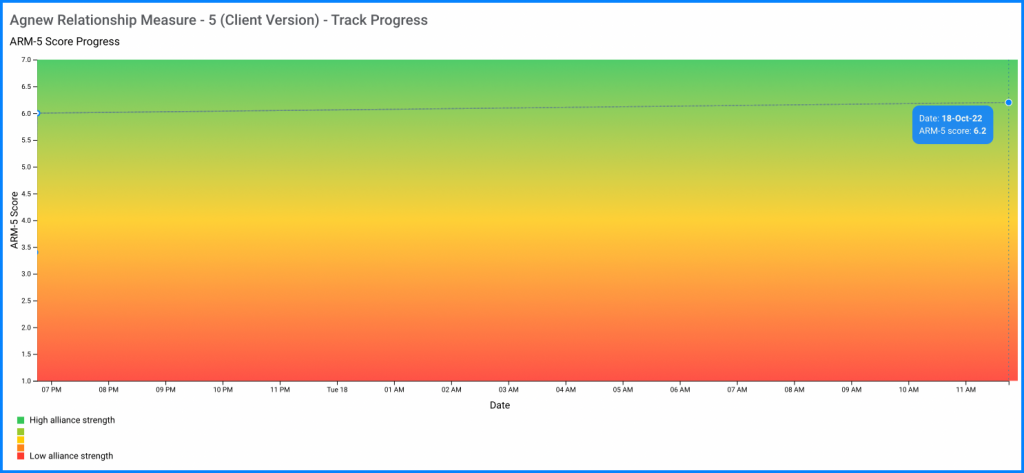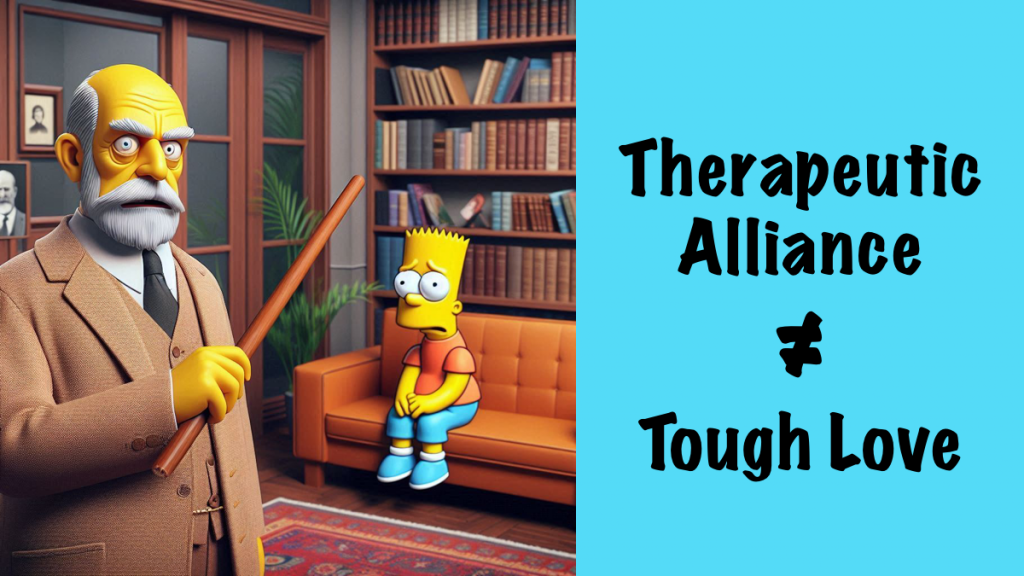“Will therapy really help me with my problems?” It’s a common question many clients ask before beginning their therapeutic journey.
Research shows that many factors affect whether treatment is successful, including the severity of the problem(s) being treated, the patient’s belief that the counseling will work and the skill level of the therapist. However, research over the past fifty years has demonstrated that one factor – more than any other – is associated with successful treatment: the quality of client-therapist alliance.
The Evolution and Meaning of the Therapeutic Alliance
The idea that the relationship between therapist and client plays a crucial role in therapy’s success is not new. The roots of this construct can be traced back to the work of Sigmund Freud (1912) when he talked about “unobjectionable or positive transference,” i.e., the endowment of the therapist with positive qualities and attributes by the patient, which in turn reflected upon the past good experiences of the patient with persons of power and authority. Freud first hypothesized that this connection was central to effective treatment. Over time, the concept evolved, and today, the therapeutic alliance is widely regarded as the most important predictor of therapeutic success. Often referred to as the “working alliance” or “treatment alliance,” this term describes the collaborative relationship between therapist and client. It refers to the development of an affective bond and agreement on tasks and goals (Bordin, 1979). More than just a simple connection, the therapeutic alliance encompasses multiple interpersonal and intrapersonal processes, which together lay the groundwork for meaningful change.
Therapeutic alliance is a collaborative relationship between a patient and a therapist for the purpose of therapy or treatment. It is a relationship of working together for a common goal and is a key ingredient and a common factor for success across all therapies.
The Impact of a Strong Therapeutic Alliance on Treatment Success
The impact of a strong therapeutic alliance cannot be overstated. Studies across various therapeutic approaches—whether individual, couple, or family therapy—consistently show that the quality of this relationship is a critical factor in determining treatment success. Remarkably, this holds true regardless of the type of therapy or the issue being treated, from depression and anxiety to addiction and interpersonal problems. In fact, research suggests that over half of therapy’s positive effects can be attributed to the strength of the alliance. What’s more, it’s often the client’s perception of the relationship, even in the early stages, that predicts their progress. A strong bond encourages client engagement, boosts their investment in the process, and significantly increases the likelihood of successful outcomes.

Key Qualities of a Strong Therapeutic Relationship
Given the critical role of the therapeutic alliance in treatment success, defining the qualities of a “good” therapeutic relationship has been a major focus of research. Dr. Edward Bordin, a leading expert in this area, identified three key components: a strong emotional bond of trust, caring, and respect; alignment on therapy goals; and active collaboration on the tasks of treatment. Beyond these, a shared sense of ownership over the process is essential. Both therapist and client must trust that each is fully invested in working toward positive outcomes. Like any close relationship, challenges can arise, but the way these challenges are navigated is crucial. A healthy therapeutic alliance allows for open dialogue about any difficulties, fostering growth and collaboration.
Qualities of a Good Therapeutic Relationship
- Mutual trust, respect, and caring
- General agreement on the goals and tasks of therapy
- Shared decision-making throughout the treatment
- Mutual engagement in the “work” of the treatment
- The ability to discuss the “here-and-now” aspects of the relationship
- Freedom to express any negative emotional responses
- The ability to address and resolve any problems that may arise
Measuring Therapeutic Alliance Theory in Practice
While all the theory and research on the therapeutic alliance provide valuable insights, the real question for therapists is: how do you apply this knowledge in day-to-day practice? Tracking and measuring the strength of the therapeutic relationship is essential to ensuring successful outcomes. Thankfully, there are several well-established tools designed to assess the quality of the therapeutic alliance. Let us look at few of the leading tools;
- Agnew Relationship Measure – 5 (ARM-5): The ARM-5 Client Version is a 5-item self-report measure designed to assess the client- therapist alliance. The ARM-5 is a short form version of the original 28-item ARM. It includes five items from three of the ARM’s five scales, Bond, Partnership, and Confidence.
- Brief Revised Working Alliance Inventory (BR-WAI): The BR-WAI is a revised version of the WAI and measures the quality of the therapeutic alliance between a therapist and client. It evaluates three key components of the relationship: the emotional bond, agreement on the goals of therapy, and the collaboration on tasks.
- Session Rating Scale (SRS): The SRS is a simple, 4-item pencil and paper alliance measure designed to assess key dimensions of effective therapeutic relationships. The SRS translates what is known about the alliance into four visual analogue scales to assess the clients’ perceptions of: respect and understanding, relevance of the goals and topics, client-practitioner fit, and overall alliance.
Streamlining Measurement-Based Care with PsyPack: Simplified Assessment and Progress Tracking
While assessment tools like the ARM-5, BR-WAI, and SRS are invaluable for measuring the therapeutic alliance, therapists need a systematic way to integrate Measurement-Based Care (MBC) into their practice. That’s where PsyPack comes in. PsyPack simplifies the process by offering a seamless platform for administering, scoring, and tracking assessments.
For example, the ARM-5 comes preloaded within PsyPack, allowing therapists to quickly access and analyze results. Below is a screenshot of the results interface for the ARM-5:

PsyPack also offers a built-in progress tracking feature, so therapists can monitor changes in the therapeutic alliance over time. This makes it easy to identify trends and make timely interventions when necessary:

Beyond preloaded assessments, PsyPack’s custom assessment feature enables therapists to add their own tools, such as the BR-WAI, SRS, or any other preferred measure. Scoring and reporting are handled automatically, streamlining the workflow and ensuring accuracy. With PsyPack, adopting MBC becomes efficient and hassle-free, allowing therapists to focus on fostering the therapeutic relationship without being bogged down by administrative tasks.
Conclusion: Enhancing Therapeutic Outcomes Through Strong Alliances
In conclusion, the therapeutic alliance is a vital component of successful therapy, influencing treatment outcomes across various modalities. By understanding its importance and actively measuring its quality, therapists can enhance their practice and better support their clients. While tools like the ARM-5, BR-WAI, and SRS provide valuable insights into the therapeutic relationship, integrating these assessments into everyday practice can sometimes be a challenge. Platforms like PsyPack offer a way to streamline this process, allowing therapists to focus more on building strong alliances. Ultimately, prioritizing the quality of the therapeutic relationship can pave the way for lasting change and meaningful progress in clients’ lives.
